Digital marketing is commonly recognized, and many of us sense the need to engage in it, particularly considering the vast global presence of over 4 billion Internet users.
Yet, the landscape of digital marketing encompasses various types, leading to questions such as whether social media marketing falls under the digital umbrella and whether radio advertising is also classified as digital.
If you are uncertain about the precise definition of digital marketing, rest assured- you’re not alone. A Google search for “digital marketing” yields an overwhelming 2 billion results, reflecting the widespread curiosity and complexity surrounding this multifaceted field.

Types of Digital Marketing Strategies:
1. Content Marketing

Content marketing constitutes a facet of digital marketing that centers on the creation and dissemination of content tailored for a specific audience. The content aspires to be valuable, pertinent, and ideally, consistently delivered. Its primary objective is to prompt a lucrative customer response.
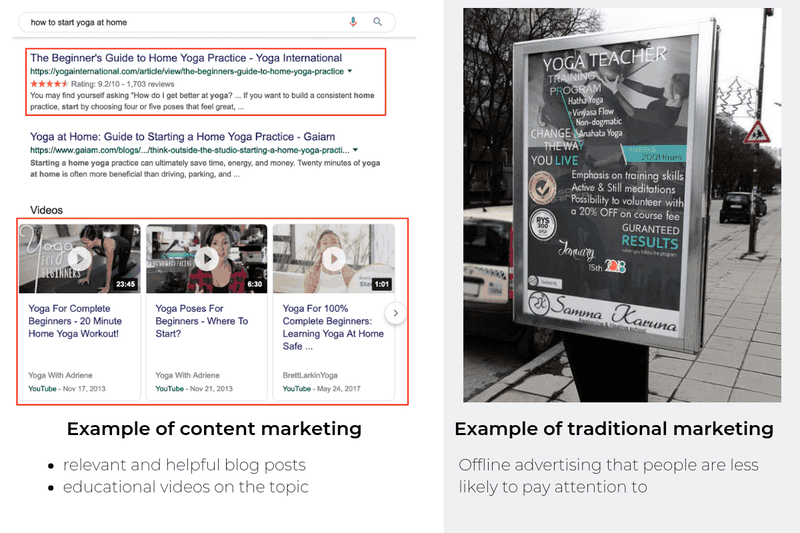
The distinguishing factors lie in the descriptors “valuable” and “relevant,” setting content marketing apart from conventional, intrusive advertising. The essence is to cultivate a desire within the target audience to actively seek out and engage with the content.
In a broader context, content marketing seamlessly integrates with various other digital marketing endeavors, spanning social media marketing, SEO, and email marketing. Quality content serves as the linchpin for any marketing initiative you embark upon.
Illustrative examples of content marketing encompass a spectrum of formats such as blog posts, podcasts, videos, infographics, white papers, case studies, and ebooks. These forms collectively contribute to a strategic approach that transcends traditional marketing, fostering a connection with the audience through content that is not just promotional but genuinely valuable and sought after.
2. SEO
Search Engine Optimization (SEO) involves acquiring high-quality traffic from unpaid, organic search results on search engines like Google and Bing.
The crux lies in directing traffic to your website that aligns with your industry. For instance, if you focus on selling raincoats and attract a substantial influx of visitors searching for Macintosh computers, the generated traffic becomes inconsequential.
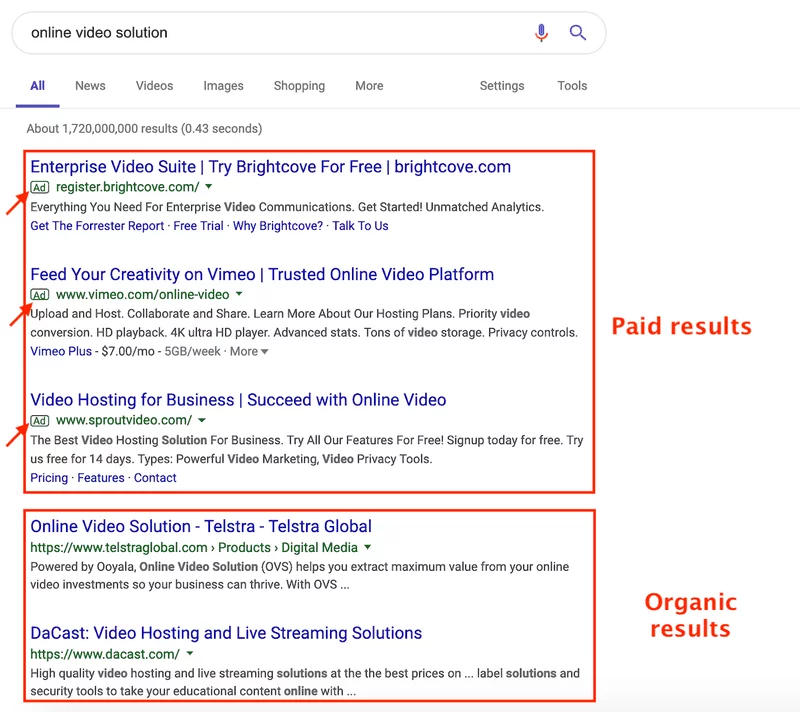
SEO is an important cornerstone of digital marketing, wielding the power to enhance your content for search engines and cultivate a consistent flow of pertinent traffic, poised to expand over time. With effective search engine optimization, your online presence may be noticed.
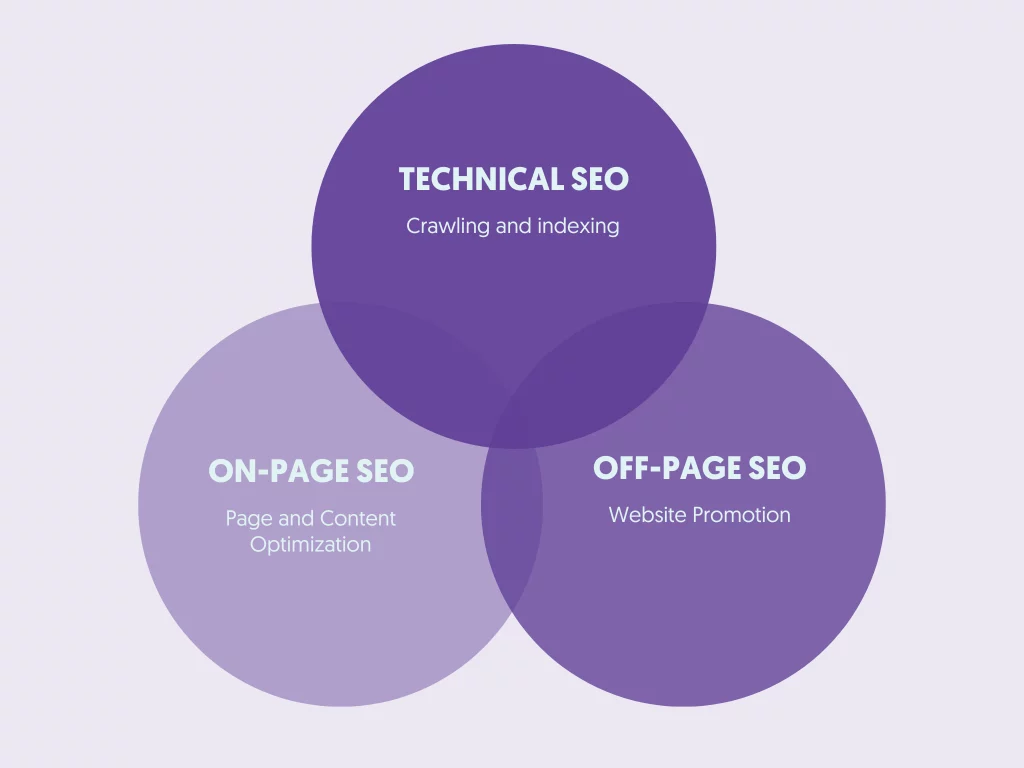
Various optimization techniques contribute to a robust SEO strategy, encompassing activities like researching relevant keywords and seamlessly integrating them into your website content, optimizing titles and descriptions, enhancing website loading speed, and constructing pertinent backlinks. These practices fortify your online visibility, ensuring that your content is easily found by individuals actively seeking information in your domain.
Originally, “search engine marketing” encompassed paid and organic methods to boost search traffic. Gradually, the industry narrowed the term to “SEM,” referring primarily to paid activities.
3. SEM
Search Engine Marketing is a integral part of digital marketing focused on elevating a website’s visibility through paid strategies on search engines. This involves deploying ads via platforms like Google AdWords and Bing Ads.
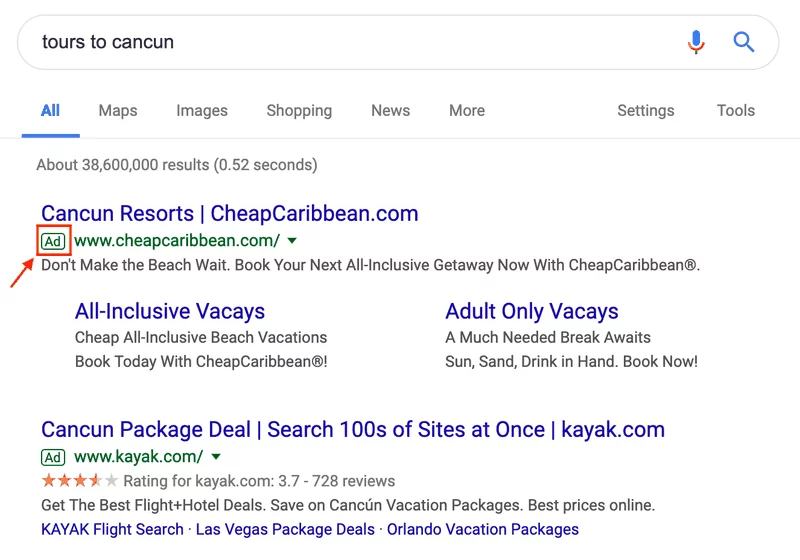
Google Ads distinguishes paid results with an “Ad” label, positioning these pages prominently in search results. The strategic interplay of Search Engine Optimization (SEO) and SEM effectively drives high-quality traffic.
By engaging in search engine marketing, your brand strategically places itself in front of an actively searching audience. This deliberate approach increases the chances of capturing the attention of users genuinely interested in your products or services, enhancing overall visibility and potential conversions.

4. SMM
Social media marketing (SMM) involves leveraging social media platforms to garner attention and drive traffic. This approach increases visibility and fosters meaningful connections with your customer base.
While SMM benefits various sectors of digital marketing, B2C and SaaS companies tend to extract the most value from it. The crux of social media marketing is actively listening to customer feedback, participating in conversations, and sharing valuable content.
Most bloggers don't do the things that get the best results…
— Andy Crestodina (@crestodina) November 7, 2018
Check out the final analysis from the 5th annual "Survey of 1000 Bloggers"https://t.co/oQ7P2vg9Fr
Big thanks to everyone who took the survey! pic.twitter.com/L1RIriagfk
A notable illustration is a tweet by Andy Crestodina from Orbitmedia showcasing how effectively SMM operates. He grabs attention by sharing valuable information through an infographic, directs traffic to his website with a posted link, and stimulates discussion, as evidenced by the 53 comments.
When integrated with content marketing and SEO, social media marketing forms the foundation of “inbound marketing.” This methodology strives to attract, engage, and delight potential leads. Key objectives of inbound marketing encompass capturing user attention, channeling relevant traffic to the website, and ultimately converting visitors into satisfied customers.
5. Email Marketing
One of the earliest forms of marketing, email marketing, has endured through the years due to its multifaceted advantages, which remain prevalent in contemporary business practices. It constitutes a digital marketing approach wherein businesses establish interactive communication with their audience via email channels.
Customers willingly subscribe to a business’s email list, granting permission for the company to communicate with them via email. Businesses can then deploy various email communications, encompassing promotional offers, educational content, or general updates.
Email marketing revolves around the pivotal element of your email subscriber list. Cultivating a robust list of individuals open to your marketing efforts is the prerequisite for initiating campaigns. Strategic placement of sign-up forms across your website, whether embedded in pages, added to sidebars, or featured in popups, effectively grows your email list.
To augment opt-in rates, businesses commonly employ lead magnets — free resources or gifts offered to visitors in exchange for their contact details. Examples include product discounts or eBooks providing specific insights. Upon a subscriber joining your email list, you gain direct access to engage them with marketing messages.
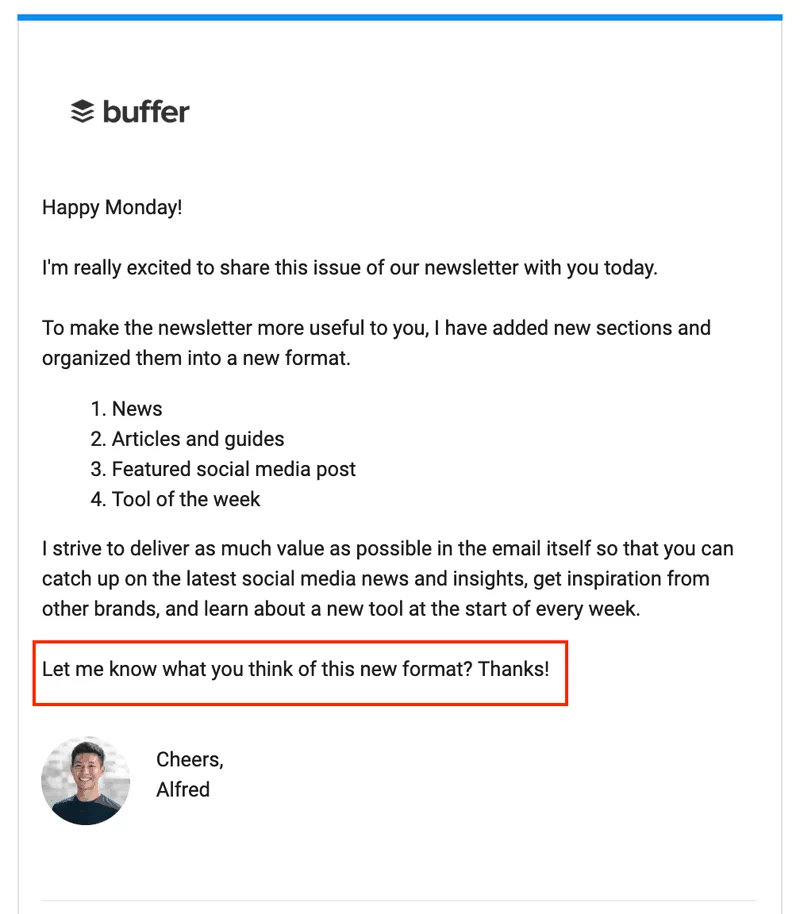
An invaluable facet of email marketing is the ability to establish automated campaigns. Email autoresponder software empowers businesses to configure campaigns that automatically dispatch a predetermined sequence of messages.
This automation proves highly effective in guiding individuals through the various stages of the digital marketing sales funnel, providing tailored content corresponding to each phase of their purchasing journey.
Examples of Automated Email Campaigns:
- Abandoned Cart Campaigns: Follow-up emails for individuals who added products to their cart but left the site without completing the purchase.
- Weekly Newsletter Campaigns: Recurring email series sharing updates and new offers with subscribers.
- Win-back campaigns are email sequences targeting individuals who previously made a purchase but haven’t returned in a while.
- Remarketing Campaigns: Follow-up messages sent to users who viewed specific products on your site.
Email marketing additionally grants substantial control over your email list. Most email marketing software facilitates segmenting subscribers based on various criteria, like geographic location or engagement frequency.
This segmentation enables the delivery of personalized messages, fostering higher conversion rates through tailored communication strategies. The enduring efficacy and adaptability of email marketing make it an indispensable tool in the marketing landscape.
6. Affiliate Marketing
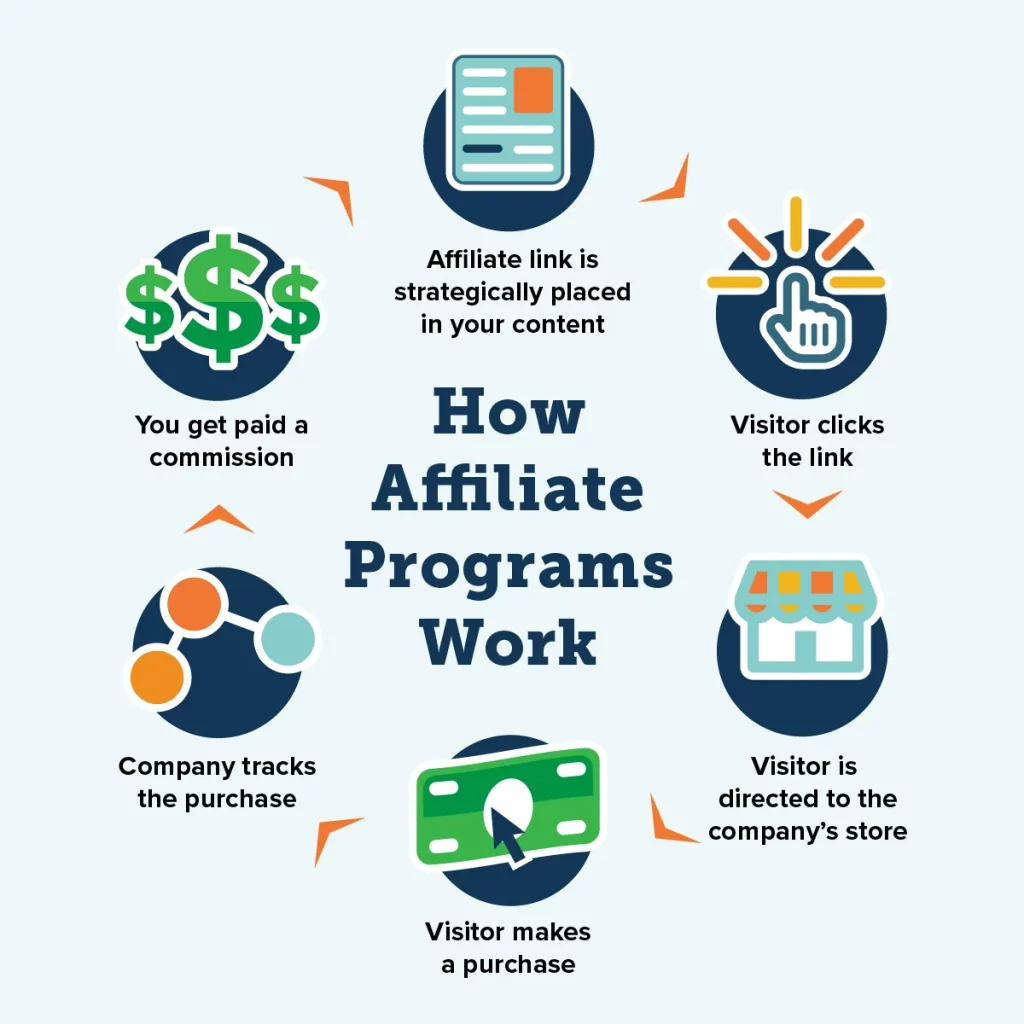
Affiliate marketing stands out as an ingenious strategy, allowing businesses to enlist the support of external entities to expand their audience and enhance customer acquisition. This collaborative effort is facilitated through the establishment of affiliate programs.
Affiliates engage in marketing by disseminating unique promotional links. When a user completes a purchase after clicking on the affiliate’s association, the affiliate is credited for the sale. It earns a commission as per the agreed-upon terms in its affiliate agreement.
Implementing Affiliate Marketing:
A. Creation of Affiliate Program:
- Companies looking to harness affiliate marketing must initiate an affiliate program, outlining terms and commission details.
- An interface for affiliates to manage their accounts is a requisite component.
B. Program Hosting Options:
- Businesses can host their affiliate programs independently or opt for affiliate networks like Shareasale, Awin, or CJ Affiliate.
- Affiliate networks streamline administrative tasks associated with managing an affiliate program.
C. Affiliate Interface:
- Affiliates receive unique links upon joining a program, crucial for tracking the traffic they direct to the business’s website.
- These links are strategically placed across the affiliate’s marketing channels, often blogs or social media profiles.
D. Commission Structure:
- Commissions, either a flat amount or a percentage of the order value, vary based on program specifics and the product type.
- Commissions are rewarded to affiliates upon completing transactions resulting from their promotional efforts.

Key Considerations:
- Cookie Duration: Most affiliate programs incorporate a cookie duration, specifying when a visitor must complete a purchase for the affiliate to get a commission. For instance, a program with a 30-day cookie duration allows commission if a purchase is made within thirty days of clicking the affiliate link.
Affiliate marketing presents an innovative avenue for businesses to tap into external partners’ extended reach and promotional prowess, fostering a symbiotic relationship that benefits all parties involved.
Refer to top affiliate marketing blogs here.
7. Mobile Marketing

Source: Meltwater
In the contemporary digital landscape, most internet traffic emanates from mobile devices. Consequently, businesses must recalibrate their digital marketing approaches to cater to the flourishing population of mobile users.
Mobile marketing emerges as a strategic response, aiming to optimize marketing endeavors explicitly for users accessing content on mobile devices. It encompasses a spectrum of communication methods, ranging from SMS messages and push notifications to in-app advertisements, aligning with the diverse mobile ecosystem.
How does Mobile Marketing Operate?
Mobile marketing manifests as a dynamic discipline within digital marketing, with operational nuances contingent on the approach adopted by the business. Key implementation methods include:
A. Location-Based Marketing:
- Businesses can use the Google Ads local ad extension to display mobile ads to users within specific geographic zones.
- Example: A restaurant targeting keywords like “local restaurant” can showcase its location on a map beneath the ad for nearby individuals searching on mobile devices.
B. In-Game and In-App Advertisements:
- Collaboration with game creators and app developers facilitates the promotion of products within applications.
- Ad formats span popups, banners, full-screen images, or seamless integration into the app’s content.
Responsive Strategies for a Mobile Audience:
Recognizing the ubiquity of mobile devices, businesses employ mobile marketing to ensure their messages resonate effectively with on-the-go consumers. This adaptive approach acknowledges how users engage with content on mobile platforms, fostering a targeted and seamless user experience.
8. Influencer Marketing: Unleashing the Power of Social Authority
Long utilized by companies leveraging the appeal of celebrities, influencer marketing has emerged as a dynamic form of endorsement in the era of social media.
Influencer marketing, a facet of digital marketing, leverages endorsements or recommendations from influential figures, commonly known as influencers, to promote products or services.
An influencer doesn’t necessarily have to be a celebrity; rather, they possess authority in a specific niche and influence the decisions of their audience. Their significant social followings enable them to reach a wide audience, with many admirers swiftly acting on their endorsements.
How Does Influencer Marketing Work?
Initiating influencer marketing involves identifying influencers to advocate for your business. Various approaches exist, such as focusing on a specific social media platform for audience growth or seeking industry authorities regardless of their primary platform.
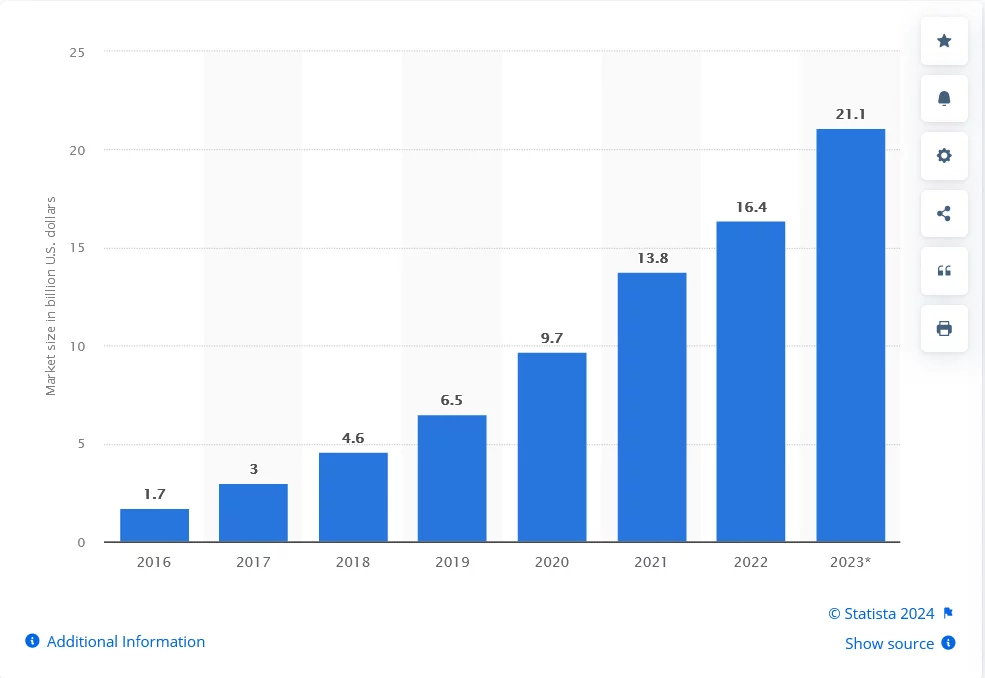
Source: Statistia
Influencer programs often act as intermediaries, connecting businesses with relevant influencers. Once suitable influencers are found, partnerships can take different structures. Payment methods include flat retainers, per post/promotion fees, or results-based compensation.
Influencers tap into their follower base through promotions, generating highly engaged web traffic. Like affiliate marketing, tracking links plays a vital role, attributing sales and conversions to the influencer campaign for clear result analysis.
9. Audio Marketing
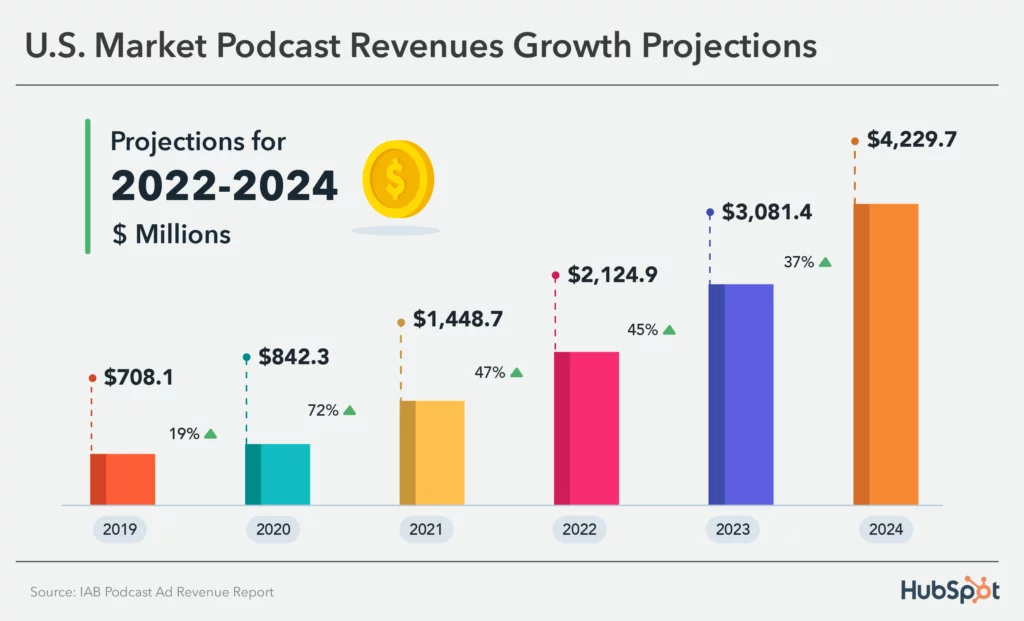
Audio marketing stands as a digital strategy centered around captivating audiences through audio-based content, predominantly manifested in the form of podcasts. The crux of success lies in curating content that deeply connects with listeners, delivering messages in a manner that is not just memorable but also inherently engaging.
How Audio Marketing Operates
Embarking on an audio marketing strategy involves a series of deliberate steps:
- Identify Your Target Audience: Determine the demographic for your podcast, delving into their interests, digital behaviors, and favored platforms for a more personalized approach.
- Optimize for SEO: Enhance the discoverability of your podcast by incorporating relevant keywords into the title, description, and website content, optimizing it for search engine visibility.
- Create a Dedicated Website: Establish a dedicated website for your podcast, enriching it with comprehensive show notes, episode transcripts, and a blog section. This not only boosts audience engagement but also contributes to SEO.
- Leverage Social Media: Actively promote your podcast across social media platforms frequently visited by your target audience. To generate interest, utilize engaging posts, snippets, compelling quotes, or audiograms extracted from episodes.
- Collaborate with Guests and Influencers: Extend invitations to guests for your podcast, utilizing their networks for promotional purposes. Additionally, collaborate with influencers within your niche to expand reach and credibility.
- Leverage Podcast Directories: Broaden your podcast’s reach by submitting it to popular directories like Apple, Spotify, and YouTube. This ensures exposure to a diverse and extensive audience.
10. Website Marketing
Website marketing constitutes the strategic promotion of a website in the boundless landscape of the Internet. Integral to the overarching digital marketing strategy, its primary objective is attracting a larger website audience.
Mechanism of Website Marketing
Effective website marketing unfolds through a systematic approach, encompassing key steps tailored to amplify visibility and drive traffic:
- Strategic SEO Implementation: Implement a robust SEO strategy incorporating relevant keywords, meta tags, and quality content to enhance the website’s ranking on search engine results pages.
- Content Creation and Optimization: Generate high-quality, engaging content that captivates visitors and aligns with search engine algorithms, thereby improving overall website performance.
- Social Media Integration: Seamlessly integrate the website into social media platforms, leveraging these channels to disseminate content, interact with people, and drive traffic back to the website.
- Email Marketing Campaigns: Employ targeted marketing campaigns to nurture leads, engage existing users, and direct them toward the website for specific actions.
- Paid Advertising Strategies: Use paid advertising methods, like Google social media ads, to create targeted campaigns that reach a specific audience segment and drive traffic to the website.
- Analytical Insights and Refinement: Regularly analyze website performance metrics using tools like Google Analytics. Use these insights to refine marketing strategies, identify areas for improvement, and elevate the user experience.
11. Instant Messaging Marketing
In the ever-evolving digital communication landscape, instant messengers have emerged as a dominant trend, boasting an impressive 1.5 billion monthly users on WhatsApp globally, closely followed by Facebook Messenger and WeChat. To effectively reach your audience where they reside in the digital realm, immersing yourself in the world of instant messaging marketing is not just a trend but a strategic imperative.

This facet of digital marketing has experienced remarkable growth in recent years, propelled by the inherent trust users place in messages received through messengers, mirroring the trust associated with communication from a close friend. This stands in stark contrast to the susceptibility of emails and SMS to spam-related concerns. Instant messaging marketing unfolds in multifaceted ways, offering avenues from customer support integration to keeping your audience abreast of new blog posts.

However, a well-crafted strategy serves as the North Star in instant messaging marketing, akin to navigating any facet of digital marketing. Before delving into the intricacies, it is prudent to outline a comprehensive plan that aligns with your overarching marketing objectives and resonates with the dynamic nature of your target audience’s preferences. This strategic approach ensures that your foray into instant messaging marketing is not just a trend-following exercise but a purposeful engagement that enhances your brand’s resonance in the digital sphere.
Conclusion:
Embarking on your digital marketing journey doesn’t demand an immediate embrace of all ten strategies. Instead, consider strategically selecting a few that align most closely with your business objectives. Through a process of experimentation and vigilant measurement of outcomes, you can tailor your approach, ensuring a bespoke digital marketing strategy that propels your business toward success. Through a process of experimentation and vigilant measurement of outcomes, you can tailor your approach, ensuring a bespoke digital marketing strategy that propels your business toward success.
FAQs on Digital Marketing:
Is it essential to hire a professional for digital marketing?
While hiring professionals can streamline and enhance your digital marketing efforts, especially for intricate strategies, smaller businesses can initially manage basic strategies in-house. Leverage available resources, and consider professional assistance as your business grows.
Are there specific industries that benefit more from certain types of digital marketing?
Yes, the effectiveness of digital marketing strategies can vary based on the industry. For instance, visual platforms like Instagram may be more impactful for industries with visually appealing products, while B2B businesses might find success with LinkedIn or email marketing. Tailor your choices to your industry and audience preferences.
How do I stay updated on the latest digital marketing trends?
Stay informed by following reputable digital marketing blogs, attending industry conferences, participating in webinars, and joining online communities. Engaging with professionals in the field and continuously learning about emerging trends will help you stay at the forefront of digital marketing innovations.



